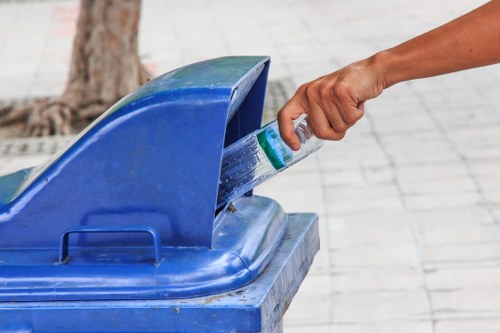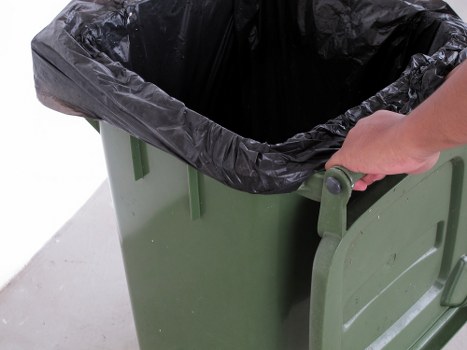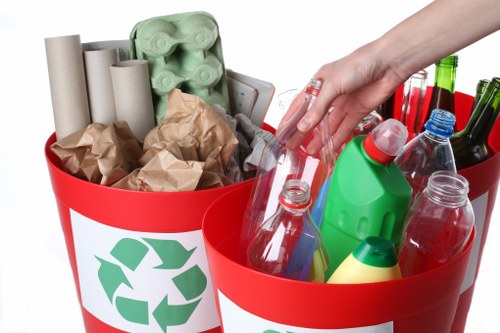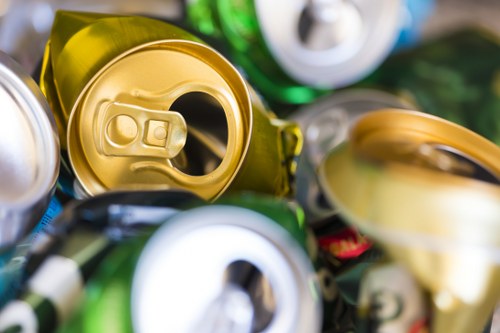Waste Clearance in Rubbish Sucks: Navigating the Challenges
Understanding the Waste Clearance Dilemma

Waste management is an essential service that ensures our environments remain clean and safe. However, when it comes to waste clearance in rubbish, many individuals and businesses encounter significant challenges.
From the accumulation of unwanted items to the complexities of disposal regulations, the process of clearing rubbish can often feel overwhelming and frustrating.
In this article, we will delve into why waste clearance in rubbish sucks, explore the underlying issues, and provide actionable solutions to make the process smoother and more efficient.
The Common Pain Points in Waste Clearance

One of the primary reasons waste clearance in rubbish is problematic is the sheer volume of waste generated by households and businesses alike. This increasing volume places a strain on existing waste management systems, leading to delays and inefficiencies.
Additionally, improper sorting and categorization of waste can complicate the clearance process. Without proper separation of recyclable materials, hazardous waste, and general rubbish, disposal becomes more time-consuming and costly.
Furthermore, the lack of accessible and affordable waste clearance services exacerbates the issue. Many people find themselves without reliable options for disposing of large or bulky items, leading to illegal dumping and environmental hazards.
Environmental Impact of Inefficient Waste Clearance

Inefficient waste clearance has significant environmental repercussions. Accumulated rubbish can lead to the contamination of soil and water sources, harming wildlife and posing health risks to humans.
Moreover, the decomposition of organic waste in landfills contributes to the emission of greenhouse gases, exacerbating climate change. Without proper waste management, these environmental issues are likely to worsen.
To mitigate these impacts, it's crucial to adopt sustainable waste clearance practices. This includes promoting recycling, reducing waste generation, and investing in eco-friendly disposal technologies.
Effective Strategies for Improving Waste Clearance

Addressing the challenges of waste clearance in rubbish requires a multifaceted approach. Here are some strategies that can help streamline the process:
- Implement Comprehensive Recycling Programs: Encourage the separation of recyclable materials at the source to reduce the burden on waste management systems.
- Increase Access to Waste Clearance Services: Expand the availability of affordable and reliable waste clearance options for both residential and commercial customers.
- Educate the Public: Raise awareness about proper waste disposal techniques and the importance of reducing waste generation.
- Invest in Technology: Utilize advanced waste sorting and processing technologies to enhance efficiency and sustainability.
By implementing these strategies, communities can significantly improve their waste clearance processes, making them more efficient and environmentally friendly.
Choosing the Right Waste Clearance Service

Selecting a reliable waste clearance service is critical to overcoming the challenges associated with rubbish disposal. Here are some factors to consider:
- Reputation: Look for services with positive reviews and a track record of dependable performance.
- Compliance: Ensure the service adheres to local regulations and environmental standards.
- Range of Services: Choose a provider that offers comprehensive waste clearance solutions tailored to your specific needs.
- Pricing: Compare prices to find a service that offers competitive rates without compromising on quality.
By carefully evaluating your options, you can select a waste clearance service that effectively addresses your rubbish disposal needs.
Benefits of Professional Waste Clearance
Engaging professional waste clearance services offers numerous advantages:
- Time-Saving: Professionals handle the entire clearance process, allowing you to focus on other priorities.
- Efficiency: Experienced services can manage large volumes of waste more effectively.
- Safety: Proper handling of hazardous materials reduces the risk of accidents and environmental harm.
- Cost-Effective: Avoid potential fines and expenses associated with improper waste disposal.
Investing in professional waste clearance not only alleviates the burden of rubbish disposal but also contributes to a cleaner and healthier environment.
Innovations in Waste Clearance Technology
Technological advancements are revolutionizing the waste clearance industry. Innovations such as automated sorting systems, waste-to-energy technologies, and smart waste management solutions are enhancing efficiency and sustainability.
For example, automated sorting systems use artificial intelligence to accurately categorize waste, improving recycling rates and reducing contamination. Waste-to-energy technologies convert non-recyclable waste into usable energy, minimizing the reliance on landfills.
Smart waste management solutions leverage data analytics and IoT devices to monitor waste levels, optimize collection routes, and predict future waste generation trends. These technologies enable more effective planning and resource allocation, ultimately improving the overall efficiency of waste clearance operations.
Community Engagement and Waste Reduction
Community involvement is crucial in addressing the challenges of waste clearance in rubbish. Encouraging residents to participate in waste reduction initiatives can significantly decrease the volume of rubbish requiring clearance.
Programs such as community recycling drives, composting workshops, and educational campaigns raise awareness about the importance of waste reduction and proper disposal practices.
Moreover, fostering a sense of responsibility and ownership among community members can lead to more sustainable waste management behaviors, benefiting both the environment and the efficiency of waste clearance services.
Regulatory Framework and Waste Clearance
Government regulations play a pivotal role in shaping waste clearance practices. Compliance with local, state, and federal laws ensures that waste is managed responsibly and sustainably.
Regulations may include guidelines on waste segregation, restrictions on certain types of waste disposal, and mandates for recycling and composting. Adhering to these regulations not only avoids legal repercussions but also promotes environmental stewardship.
Businesses and individuals must stay informed about relevant regulations and implement necessary measures to comply with waste clearance requirements.
Economic Implications of Inefficient Waste Clearance
Inefficient waste clearance has significant economic consequences. Increased costs associated with improper disposal, such as fines and environmental remediation, can burden both individuals and businesses.
Moreover, inadequate waste management infrastructure can hinder economic development. Areas plagued by excessive rubbish and environmental degradation may experience reduced property values, decreased tourism, and challenges in attracting new businesses.
Investing in efficient waste clearance systems can yield economic benefits by creating jobs, reducing cleanup costs, and enhancing the overall appeal of communities.
Future Trends in Waste Clearance
The waste clearance industry is poised for significant transformations in the coming years. Emerging trends focus on sustainability, efficiency, and innovation to address the growing waste management challenges.
One notable trend is the circular economy model, which emphasizes the reuse and recycling of materials to minimize waste generation. This approach fosters a more sustainable relationship between production and consumption.
Additionally, advancements in biotechnology offer new solutions for waste decomposition and resource recovery, further enhancing the effectiveness of waste clearance systems.
Implementing Sustainable Waste Clearance Practices
Adopting sustainable waste clearance practices is essential for long-term environmental health. Strategies include:
- Reducing Waste Generation: Implementing policies and practices that minimize the amount of waste produced.
- Enhancing Recycling Infrastructure: Developing facilities and programs that facilitate the efficient recycling of materials.
- Promoting Composting: Encouraging the organic decomposition of biodegradable waste to enrich soil quality.
- Supporting Innovation: Investing in research and development to discover new waste management technologies.
These practices contribute to a more sustainable and effective waste clearance system, benefiting both the environment and society.
Conclusion: Overcoming the Waste Clearance Challenges
While waste clearance in rubbish presents numerous challenges, proactive measures can significantly alleviate the associated frustrations. By understanding the underlying issues, implementing effective strategies, and leveraging technological advancements, communities can transform waste management into a more efficient and sustainable process.
Emphasizing community engagement, regulatory compliance, and economic considerations further enhances the effectiveness of waste clearance efforts. Ultimately, addressing these challenges is crucial for maintaining a clean, healthy, and prosperous environment.
Contact us today to learn more about how you can improve your waste clearance practices and contribute to a sustainable future.